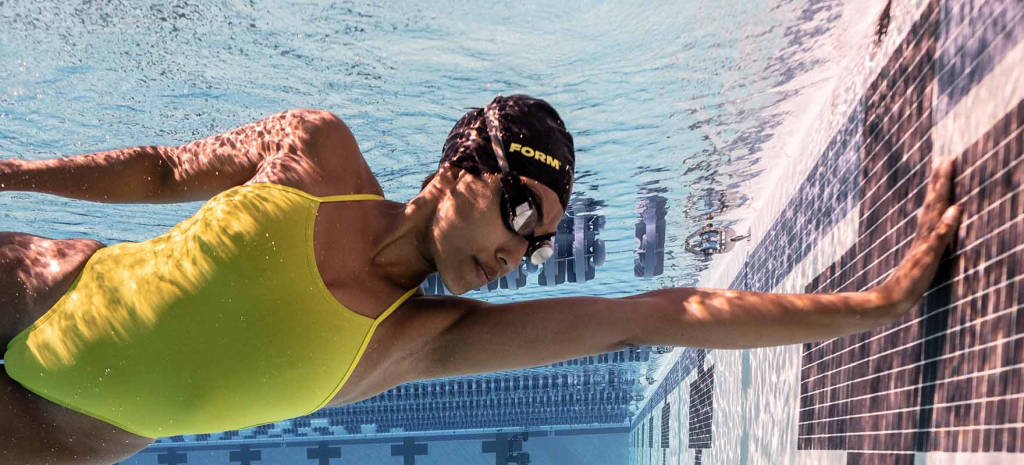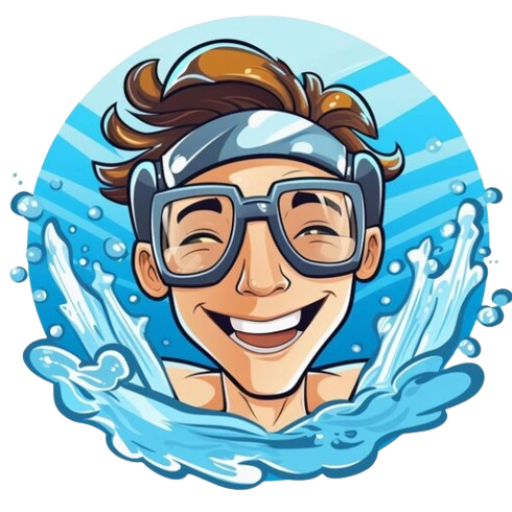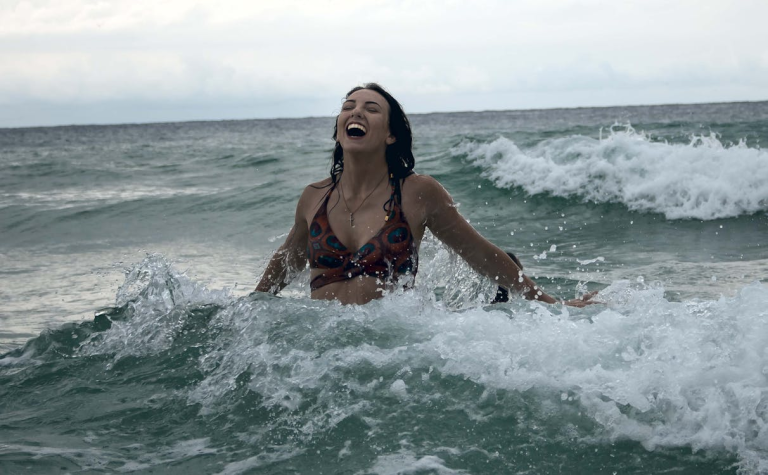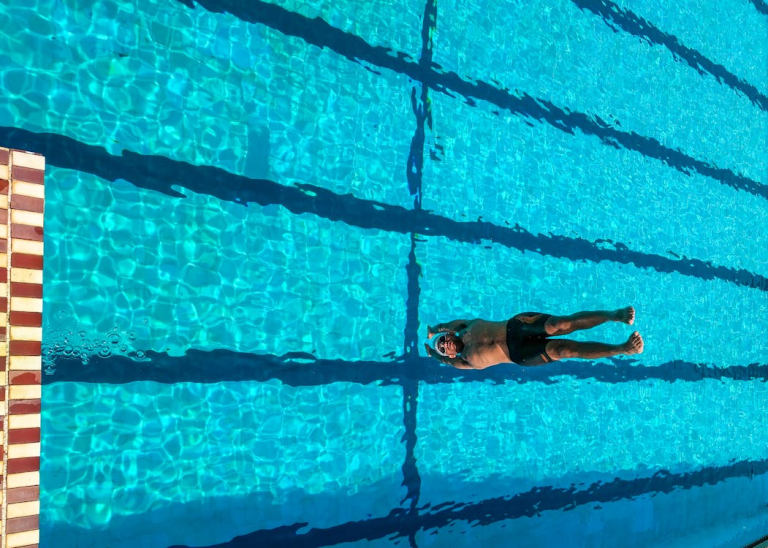Step Up Your Swimming: 7 Expert Tips to Become Faster in the Pool

The most pressing question on your mind has undoubtedly been how to swim faster ever since you first dove into the neighborhood lap pool and completed a length.
You’re not by yourself.
However, to improve your swimming speed, you must approach your exercise methodically and purposefully.
Here are seven suggestions to get you swimming faster right now.
1. Set Goals
Here’s the thing about learning how to get faster at swimming: it’s a sliding scale that varies significantly from person to person.
For a beginner swimmer, this could mean swimming 100 metres in two minutes. And for advanced swimmers, it could mean swimming 1,000 metres in under fifteen minutes.
So, before you set out to get faster, set an ultimate goal for yourself and identify small milestones you can celebrate along the way.
2. Focus On Your Swim Technique
Even more than fitness, technique is the most important component of how to swim faster.
Water is about 800 times denser than air. So, the drag that your body experiences when it’s trying to move through water is significantly stronger than it is when you’re moving around outside of the pool.
Because of that fact, the best way to swim faster is to prioritize developing the proper techniques required to minimize that drag and maximize your propulsion.
Entry and Catch
A well-executed entry and catch are crucial in setting up the remainder of your stroke.
Essentially, your “catch” is the initiation of your propulsive phase–where your hand catches the water and begins to pull through it. At this point in your stroke, you want to keep your elbow high in the water with your fingertips dipping below it.
From there, even as your arm moves into a vertical position for the push/pull action of your stroke, you’ll want to keep your elbow closer to the surface.
This is important to remember because an improper entry and catch is a leading cause of shoulder injury in swimming. So, making sure you’ve got this technique nailed is key to being able to enjoy swimming for years to come.
A great cue to remember while you’re in the pool is, “shoulder over elbow over wrist,” and we’ll dive further into this in the coming section.
Pull and Push
Your arm stroke is responsible for about 70% of your propulsive force when using the freestyle swimming technique, and your pull and push action is where the magic happens.
This phase starts following the catch and finishes when your hand exits the water. If you initiated your catch with a high elbow, as was explored in the previous section, you’ll be set up for success in your pull.
To best perform the pull action, you want to:
- Lead from your catch with a high elbow
- Move to a vertical forearm position, fingertips pointing to the pool floor
- Use your whole arm to generate propulsion
From here, you’ll want to focus on initiating your push phase.
Once your forearm is in that vertical position, push straight back, all the way past your hips until your arm is almost fully extended except for a slight bend at the elbow. This will result in a long, powerful propulsive phase that helps you get the most out of every stroke.
For beginner swimmers, the natural instinct is to use your stroke just to pull. But you can get significantly more power and propulsion from your strokes if you push through them as well.
Head Position
The basis of proper swimming technique is all about getting as streamlined as possible in the water to reduce drag. That’s why your body position is the absolute foundation of your entire stroke.
To achieve this, you want to keep your head, hips, and heels in a straight line at the water’s surface. In fact, your head has the biggest impact on your overall position.
The keys to a great head position are to keep:
- Your neck long
- Your eyes on the pool floor
- Your head stable throughout the movement
- Water pushing on the apex point of your head
It’s common to look forward as you swim, but this will cause your legs to naturally drop and your body position to falter. If you find this happening, reposition your head, and your hips and heels will follow.
Efficient Kicks
The same way that lifting your head creates drag in the water, so does kicking wildly or in an uncontrolled way. Kicking too big can cause more drag and throw off your body position.
Instead, try to maintain a steady, narrow kick with your knees straight, and to draw more power from your hips and the full length of your legs rather than just your feet.
Another important piece of the kicking puzzle is to work on pointing your toes while you kick and letting them break the surface of the water.
Remember: it isn’t how hard you kick that counts but the rhythm and form of your kick.
3. Focus on Proper Breathing Technique
Improper breathing technique adds resistance to your swim and fatigues your body. The better you are at breathing in water, the more oxygen you give to your body, and the better you’ll perform.
But that’s often easier said than done.
Your swimming technique will vary depending on the stroke you’re using, but there are a few things you can do to generally improve your breathing when you’re learning how to get better at swimming faster.
Bob Drills
You can challenge your lungs and build their capacity by performing a simple bobbing exercise. Start by bobbing up to your hairline in the pool or during an open water swim, then progress deeper and for longer, blowing water out of your nose to let your body sink down.
Bilateral Breathing
When swimming freestyle, it’s essential to practice bilateral breathing. This means breathing on odd strokes by alternating the side on which you take a breath.
Full Exhales
While the body uses oxygen as fuel, it produces CO2 as a byproduct, and it needs to be released. If you inhale big enough breaths to fill your lungs with oxygen but don’t exhale that full buildup of CO2, that’s what makes you feel out of breath, in turn making you continue to feel distressed throughout your swim.
In order to avoid this, ensure you exhale fully while your face is in the water so that it’s easier to take a deeper breath in.
Respirator Training
A respiratory training device is an excellent exercise for training your breath that doesn’t even require you to put your face in the water. You can use one on your off-days when you’re away from the pool, lake, or ocean.
Diaphragmatic Breathing
Diaphragmatic Breathing Technique (DBT), also known as belly breathing, is achieved when your stomach, abdominal muscles, and diaphragm are all engaged while breathing. It helps the lungs fill more efficiently and teaches you how to control your inhalation and exhalation.
If you want to learn more about how to improve your breathing, check out this resource: 7 Ways to Improve Your Swimming Breathing Technique.
4. Focus on Pushing Off the Wall
When you’re learning how to swim faster in the pool, your push-offs and turns give you a big leg-up. After all, pushing off from the wall, transitioning that power, and maintaining your momentum through your next length can help you get through it faster.
Flip turns can be a great way to help with this–they’re the act of flipping upside down in the water and pushing off from the wall rather than stopping, grabbing the wall, and pushing off again.
Flip turns take a lot of practice and dedication to learn. If you’re wanting to learn how to do a flip turn more effectively and but you’ve never tried one before, it’s best to work with a coach or an experienced swimmer who can teach you how to do it properly and efficiently.
If you’re not doing flip turns, there are still some great ways to reduce the amount of time you spend at the wall turning around.
Here’s one option:
- Swim to the middle of the lane as you approach the wall to turn around as this will make it easier to push off on the other side of the lane if you’re swimming laps
- Touch with one hand and stay low in the water
- Take a quick breathe and push off strong
5. Practice Swimming Drills
Rather than simply swimming lengths back and forth, practicing swimming drills is one of the best ways to learn how to swim faster.
Swimming drills are a set of motions that focus on particular strokes and techniques. They’re designed to break down your strokes and skills into individual components which you can target and improve to create a better holistic result.
These drills also focus on improving key aspects your form in order to help you to reduce drag and be more streamlined as you move through the water.
To learn more about what swimming drills are and how they help you improve, read through our resource: How Swimming Drills Help You Get Faster, Stronger, and More Efficient. It also includes a set of swim drills you can start practicing today.
Sharpen Your Mind
Doing swimming drills will often push you into a challenged state, having you swim at an intense and tiring pace.
This is done to help lift your baseline over time, but it can be a challenging feeling when you’re doing it in water.
Strengthening and sharpening your mind is going to make this a lot less taxing.
While this isn’t easy, focusing on rhythmic breathing and technique can help distract your mind from the physical exertion.
6. Train Smarter, not Harder
If you’re like most athletes who are trying to learn how to swim faster, you might intuitively think that swimming really far all the time is the best way to improve.
But the opposite is actually true.
In reality, you’re better off focusing on quality over quantity and prioritizing frequency over distance.
Swimming 500 metres five times per week with a heavy focus on technique and drills will yield much better results than swimming 1,500 metres three times per week if these longer distances mean you’re sacrificing form and technique in the process.
Shorter, more frequent, and more intentional swimming will also help you avoid over-exerting yourself and risking nagging injuries or soreness.
7. Follow a Swim Training Plan
It can be hard to tell just how much training is too much or too little when you’re learning how to swim faster.
And that’s why following a swim training plan is essentially your cheat code for becoming a stronger swimmer.
Swim training plans will provide you with structured, intentional swimming workouts tailored to your skill level and goals. That way, you can take the guesswork out of learning how to swim faster and focus exclusively on the things that will help you improve.



